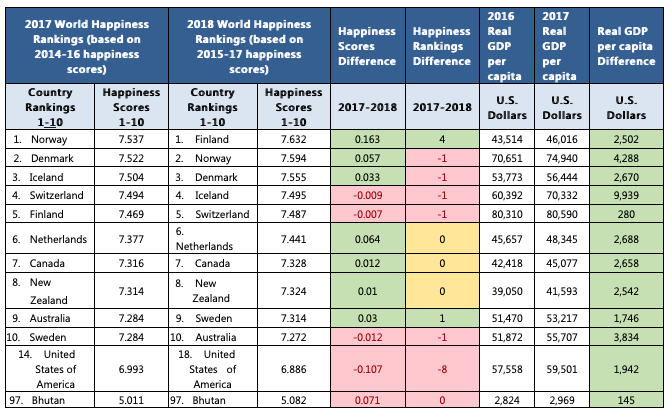Wednesday, February 20, 2019
Wellbeing measurements, Easterlin’s paradox and new growth models: A perspective through gross national happiness
From VoxEU:
“There has been considerable criticism of the general reliance on GDP as an indicator of growth and development. One strand of criticism focuses on the inability of GDP to capture the subjective well-being or happiness of a populace. This column examines new growth models, paying particular attention to Bhutan, which has pursued gross national happiness, rather than GDP, since the 1970s. It finds evidence of the Easterlin paradox in Bhutan, and draws out lessons for macroeconomic growth models.
New Zealand’s Prime Minister, Jacinda Arden, recently proposed the idea of a ‘wellness budget’ for the country, and suggested that wellbeing should be incorporated into their growth agenda (Arden 2019). In a similar vein, William Nordhaus incorporated climate change into traditional growth models, efforts for which he was awarded the Nobel Memorial Prize in Economics (Gillingham 2018). In a famous article, Easterlin (1974, revised 1995) asked whether “raising the incomes of all will raise the happiness of all?”. This question was raised following the observation that reported happiness levels remained flat over the long-run in countries which had experienced high rates of real income growth. This anomaly was subsequently dubbed the Easterlin Paradox. How relevant is this in today’s times? The following table provides some interesting clues.
Table 1 World Happiness Rankings
Source: Helliwell et al. (2018)
In Table 1, the World Happiness Rankings for different years are compared with their respective real GDP per capita outcomes. According to the Easterlin Paradox (ceteris paribus), the change in World Happiness Scores should not be proportional to the change in real GDP per capita (year-on-year difference) in any given year. If this is the case, then the country with the highest per capita income will not necessarily be that with the highest levels of happiness.
As can be noted in the table, countries such as Iceland, Switzerland, and Australia seem to be in line with the Easterlin Paradox. Bhutan seems to follow a similar trend. Interestingly, the US seems to be following the Easterlin Paradox. This has been largely attributed to the reduction in America’s social capital and the fact that “…certain non-income determinants of US happiness are worsening alongside the rise in US per capita income, thereby offsetting the gains in subjective well-being that would normally arise with economic growth” (Helliwell 2018). As such, it is quite apparent that there is a discrepancy at some level between the perceived positive proportional relationship between the notion of incomes (input) and happiness (outcome). Not only does this introduce the need to look beyond income levels, it also reasserts the need to look at other well-being measurements, such as happiness, as key measures of growth outcomes.
How can this discrepancy be bridged? More importantly, how can these elements be incorporated in a systematic manner into the policymaking ecosystem, rather than merely being proclamations from higher moral ground?”
Continue reading here.
Posted by at 7:28 PM
Labels: Inclusive Growth
Subscribe to: Posts
